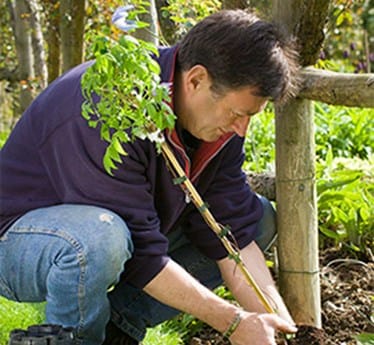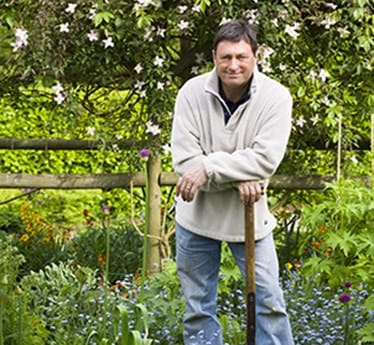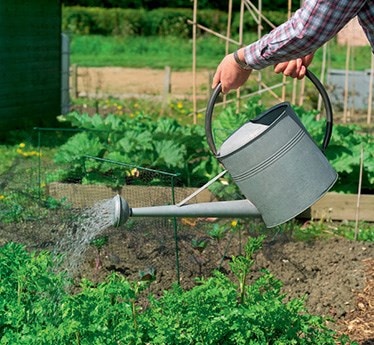Pruning for colourful stems
Beautiful bark always takes me by surprise at this time of the year. Once the last of the autumn drama queens have thrown down their fiery, leafy cloaks, these hidden gems of the winter garden come to the fore. The watery light from the low winter sun is perfect for drawing out every intricate tone and detail. Whether it is highlighting the radiant beauty of polished mahogany on a birch-bark cherry, or the sinuous patterning found on snake-bark maples. Some peeling barks are tantalising to touch, while others can be marveled at for their sheer complexity. Although I wouldn’t grow a tree purely for its winter bark, it is certainly an important feature to consider - especially in a small garden.
"Some peeling barks are tantalising to touch, while others can be marveled at for their sheer complexity."
How to increase the impact of beautiful bark
- - Choose a good quality specimen with a clear upright trunk
- - Plant in a sunny spot to catch the light and reduce algae growth
- - Prune carefully to showcase the bark
- - Clean white-barked specimens with soapy water each autumn
- - Combine with winter-flowering plants to create a seasonal feature
- - Grow in a large tub in a prominent position
Choosing beautiful bark
There are a number of good garden trees noted for their beautiful bark. Perhaps my favourite is the white-barked birch, because it not only demands attention during the winter months, but looks fantastic from an early age. Betula utilis var. jacquemontii ‘Grayswood Ghost’ is hard to beat for its startling, peeling, white skin-like bark that looks ethereal in the early morning light. The aptly named ‘Snow Queen’ (‘Doorenbos’) is another option, producing an eye-catching winter silhouette with snow-white peeling bark. Both can be grown it as single specimens in a lawn or clustered in groups to form a mini-copse that will transform your garden at this time of year. In a small plot, you could create a similar effect by choosing a multi-stemmed specimen. If planted to catch the winter sun, the bark becomes a shining beacon that gives the whole garden a lift. Best of all, both are a year-round winners, offering yellow catkins in spring and handsome, shimmering, glossy green leaves in summer that turn butter yellow before falling in autumn. For something a little more unusual, consider the slightly larger and more vigorous Betula ermanii 'Grayswood Hill' which has an intriguing cream and pink peeling bark that seems to glow in the low winter sunlight. It has spring catkins and attractive foliage, and can cope with all soils, even heavy clay.
To radiate a little warmth into the winter garden, few trees can beat the polished-mahogany, peeling bark of the birch-bark cherry (Prunus serrula). Its high-gloss finish will catch the eye at twenty paces, yet it takes on an irresistible, luxurious, satiny quality when viewed close-up. Although the best polished-mahogany effect takes several years to perfect on a young tree, the ornamental appeal is maintained through to maturity as the bark regularly peels away in bands to reveal a shiny new mahogany-red layer beneath.
A few trees offer multi-coloured bark, such as the scaly Stewartia pseudocamellia, which has a trunk that becomes a delightful patchwork of reddish-brown, orange and grey after a few years. S. sinensis is similar, but with copper, cream, green and grey bark. Both look their best when grown as multi-stemmed specimens. In a sheltered larger garden, you might like to consider the multi-toned Eucalyptus dalrympleana or E. pauciflora niphophila that both offer a patchwork bark of cream, brown, yellow, grey and pink. The popular E. gunnii will also mature into a spreading tree with orange- or pink-flushed, greeny-grey new bark. Perhaps the most beautiful flaky bark of them all is the paper-bark maple, Acer griseum. Its bark peels like the thinnest of wood-shavings that hang fast to the russet-red trunk, creating translucent curlicues that catch the light and flicker in the breeze. Simply mesmerising - especially at the start of the day when backlit by a low sun. Another quality peeler is the paper birch, Betula papyrifera, which unravels coils of white parchment strips to reveal a creamy-orange under-bark.
For bark that demands close inspection, few trees can equal the intricate reptilian qualities of the snake-bark maple. There are several to choose from, including the silver-veined green bark of Acer davidii and A. capillipes, or the white-streaked pink shoots of Acer pensylvanicum 'Erythrocladum' that gradually darken to red as they mature. All make stunning specimens for a sheltered, medium-sized garden.
Making the most of bark
Most the trees here will make excellent single specimens, while the birches and maples in particular, have more impact when grown in groups. In a small garden, you can achieve the same woodland-like affect by planting a multi-stemmed specimen instead. Bear in mind that the birches will offer ornamental appeal more or less immediately after planting. With many of the maples and other trees you may have to wait a few years before they look their best.
A sunny spot is the best position for most of the trees mentioned, although birches in particular, can cope with some shade. In this situation, you may want to give the white-barked trees a wash down with warm, soapy water each autumn to remove any green algae and show off the gleaming bark to best effect. Most birches and snake-bark maples also look great in a large tub on the patio. This can be a good way of including a specimen in a small garden. Choose a large, wide-bottomed container and fill it with soil-based compost, such as John Innes No.3 for stability.











